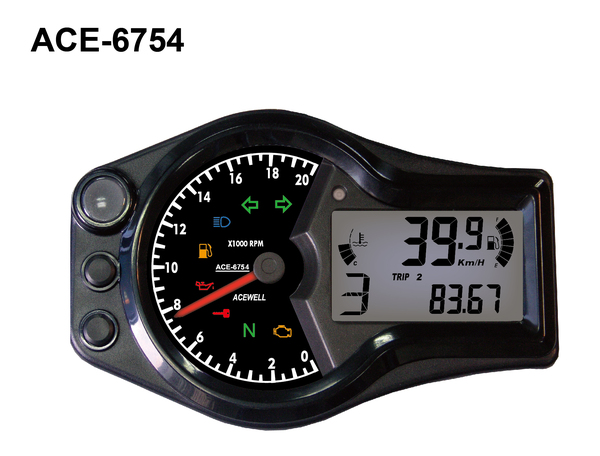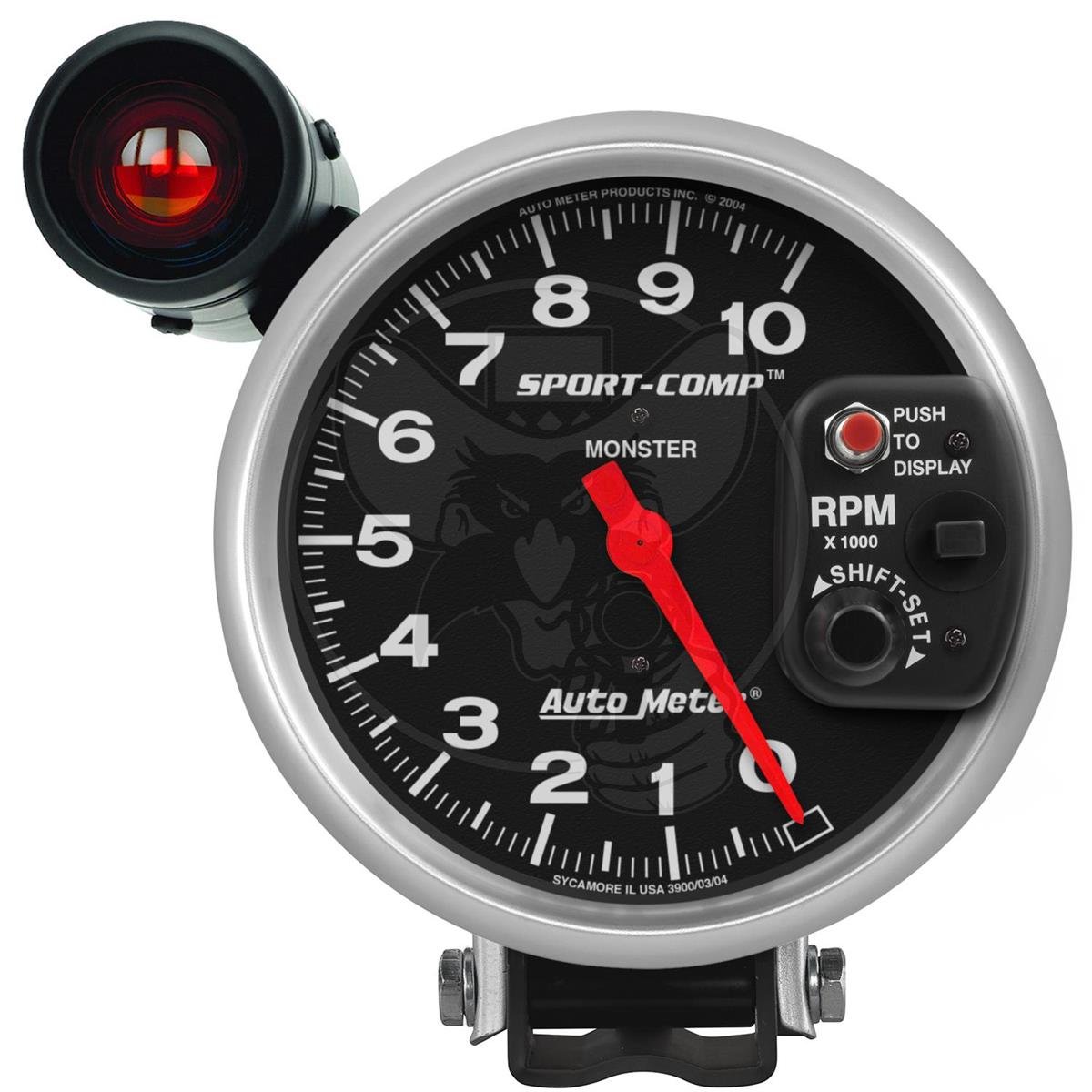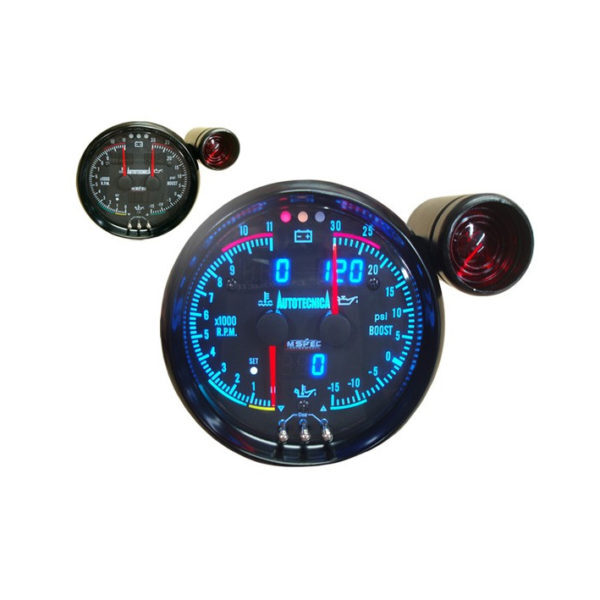The Significance of a Tachometer in Keeping An Eye On Engine Speed and Efficiency in Automotive Applications
In the realm of automotive engineering, the tachometer stands as an essential instrument in the motorist's arsenal, providing a straight home window right into the internal functions of a car's engine. Past its feature as a plain gauge of transformations per minute (RPM), the tachometer offers as a critical device for enthusiasts and specialists alike, offering real-time insights right into engine performance and health and wellness. Understanding the importance of this tool goes beyond surface-level observations, diving right into the elaborate partnership between engine speed, power outcome, and total driving experience. As we check out the multifaceted role of the tachometer in vehicle applications, a much deeper appreciation for its influence on automobile dynamics and performance begins to emerge.
Value of Keeping An Eye On Engine RPM
Monitoring engine RPM, or transformations per minute, is a crucial aspect of automotive upkeep and efficiency analysis. Engine RPM straight associates with the speed at which the engine's crankshaft revolves, indicating how quickly the engine is running - tachometer. By monitoring RPM, mechanics can assess the health of the engine, detect possible concerns, and fine-tune performance. An unusual RPM reading may indicate problems such as engine misfires, defective ignition system, or issues with the fuel distribution system. Regularly high RPM readings might indicate aggressive driving habits or the demand for a higher equipment shift to improve gas performance.
Moreover, keeping track of engine RPM is crucial for performance examination in auto racing and high-performance cars. In summary, checking engine RPM is not just vital for discovering concerns but also for enhancing engine efficiency in numerous automobile applications.

Benefits of Real-Time Information
In auto applications, real-time information plays a crucial role in giving instant insights into the performance and condition of the vehicle. By continuously keeping track of numerous parameters such as engine rate, temperature level, gas intake, and extra, real-time information supplies countless benefits that contribute to enhanced efficiency and safety when traveling.
One significant benefit of real-time information is its ability to alert drivers and technicians to any abnormalities or concerns immediately. This positive method makes it possible for fast identification of prospective problems, permitting prompt interventions to stop additional damage or breakdowns. In addition, real-time information assists in efficiency optimization by supplying immediate feedback on driving habits and engine efficiency. Vehicle drivers can change their habits in real-time based on this details to accomplish far better fuel economic situation and lengthen the lifespan of their car.

Additionally, real-time data plays an essential function in modern-day automotive diagnostics, making it possible for professionals to swiftly diagnose and attend to breakdowns. This results in minimized downtime, reduced maintenance expenses, and ultimately, enhanced total car dependability and long life (tachometer). By utilizing the power of real-time information, automotive stakeholders can make informed choices that favorably impact both the performance and durability of the lorry
Influence On Gear Shifts
Effective equipment changes in auto applications substantially influence general efficiency and driving experience. The tachometer plays a crucial role in optimizing gear shifts by supplying real-time engine rate information to the vehicle driver. When approaching the redline on the tachometer, it signals the motorist to upshift to stop over-revving the engine and causing potential damage. On the other hand, downshifting at the right moment can help maintain the engine in its power band, ensuring responsive acceleration when needed.
Additionally, the tachometer help in accomplishing smoother gear transitions, particularly in hand-operated transmissions. By checking engine rate, motorists can my blog execute gear changes at the ideal RPM variety, minimizing jerking motions and decreasing endure the transmission parts. This accuracy on duty adjustments not just enhances driving comfort however likewise contributes to sustain effectiveness.
Enhancing Fuel Performance
Provided the crucial function the tachometer plays in optimizing equipment shifts for performance and engine wellness, it directly adds to taking full advantage of fuel performance in auto applications. By offering real-time feedback on engine speed, the tachometer assists vehicle drivers in preserving one of the most effective RPM variety for fuel economic situation. When chauffeurs consistently keep an eye on the tachometer and adjust their motoring routines accordingly, they can prevent unnecessary fuel intake triggered by this hyperlink over-revving or hauling the engine.
Furthermore, the tachometer helps motorists identify one of the most fuel-efficient equipment to be in at any provided minute, avoiding the engine from functioning harder than essential. This is particularly vital during acceleration and travelling, where remaining in the right gear can considerably influence fuel effectiveness. In addition, the tachometer can alert motorists to possible mechanical concerns that could be adversely affecting fuel economic climate, such as a sliding clutch or a clogged up air filter. Finally, the tachometer serves as a useful device in enhancing fuel effectiveness by advertising optimum driving habits and identifying areas for enhancement in the automobile's efficiency.

Maximizing Engine Longevity
The tachometer's role in keeping track of engine speed and performance contributes in ensuring the longevity of auto engines. By making use of the tachometer successfully, chauffeurs can optimize engine longevity with mindful RPM monitoring. Constantly revving an engine as well high can result in too much deterioration on important components, such as the pistons, shutoffs, and bearings. With time, this can cause reduced engine performance and possible malfunctions. Monitoring the tachometer permits chauffeurs to remain within the suggested RPM range for their lorry, avoiding unneeded stress on the engine and extending its life expectancy.

Verdict
In conclusion, the tachometer plays a critical duty in keeping an eye on engine rate and efficiency in automotive applications. By offering real-time data on RPM, it permits reliable equipment shifts, boosted fuel performance, and made the most of engine durability. This tool is necessary for preserving optimum engine performance and guaranteeing the overall capability of a vehicle.